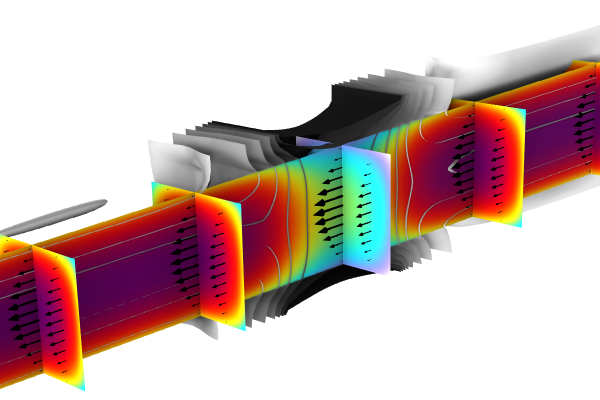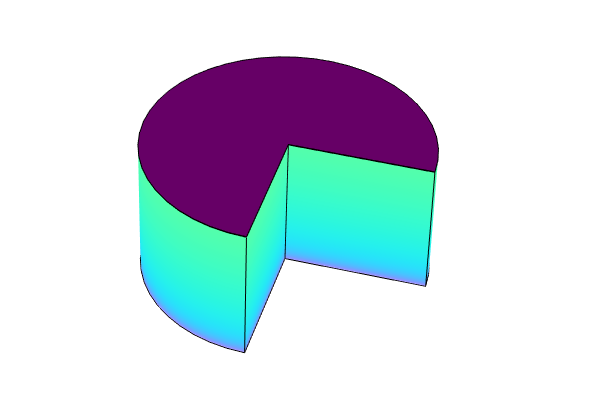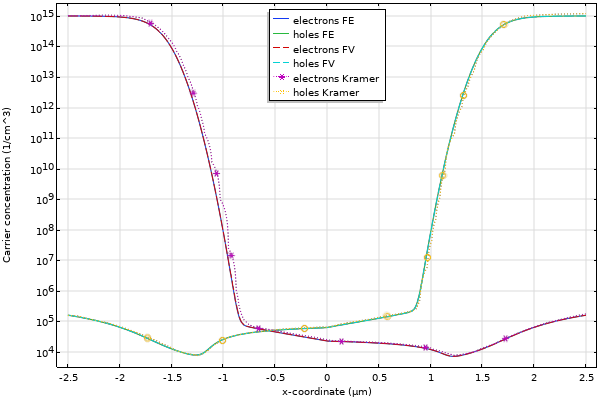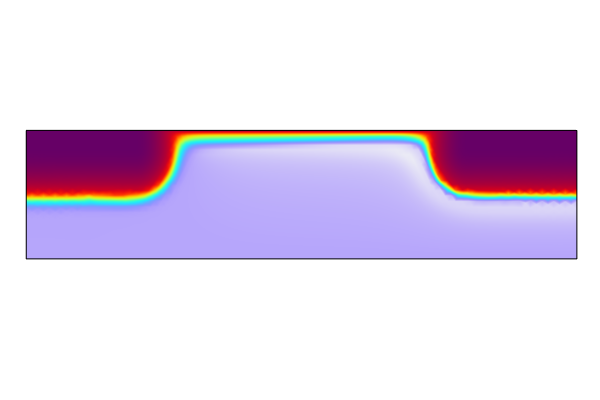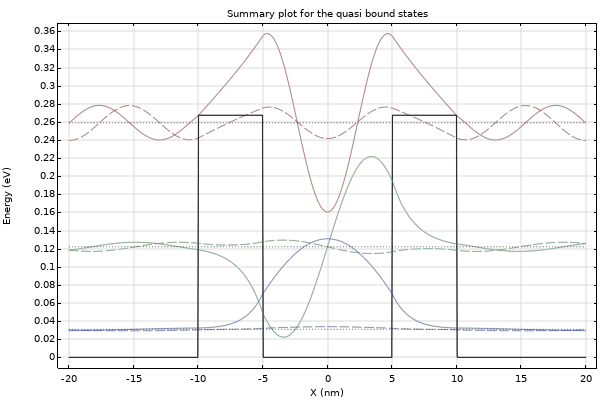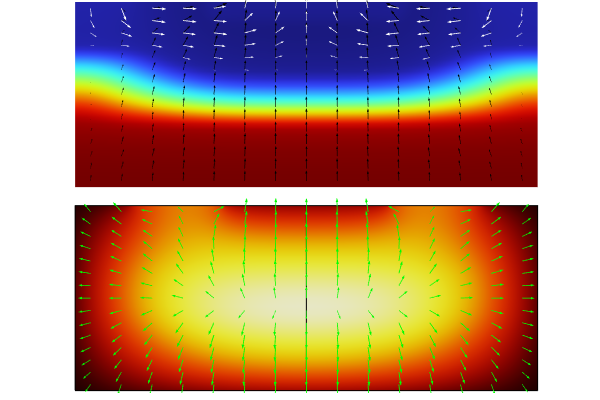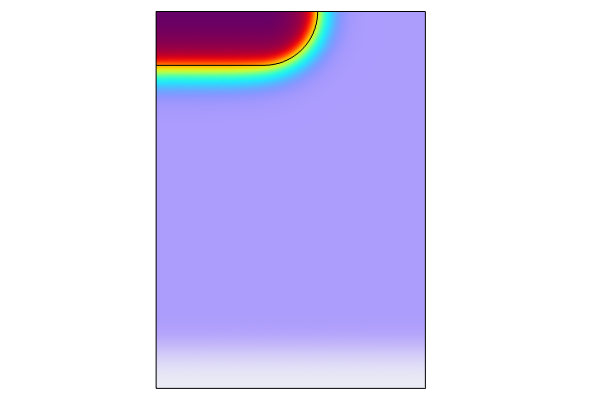Introduction to Semiconductor Modeling
This 6-part, self-paced course offers an introduction to modeling semiconductor devices in COMSOL Multiphysics®. The Semiconductor Module is based on drift-diffusion equations and can include density-gradient contributions for quantum confinement effects. During the course you will see how to model and simulate a large variety of semiconductor devices, such as metal–oxide–semiconductor field-effect transistors (MOSFETs), solar cells, photodiodes, and LEDs, among others. The Schrödinger Equation and Schrödinger-Poisson interfaces are useful for modeling quantum-confined systems, such as quantum wells, quantum wires, and quantum dots, which is also discussed throughout the course. Toward the end, the opportunity for modeling the interplay between drift diffusion, electromagnetic wave propagation, and thermal effects in semiconductors are showcased and explored.
Through step-by-step demonstrations in the software and comprehensive discussions you will gain a solid foundation in the fundamentals of building such models. Reference and exercise files are also included so that you can follow along with the processes described here.
 A 3D plot of the electron concentration in a nanowire.
A 3D plot of the electron concentration in a nanowire.
A 3D plot showing the electron density profile in a nanowire built in part 3 of the course, using the density gradient formulation.
The material covered through the duration of the course is as follows:
Part 1: Introduction to the Semiconductor Module
- Introduction to the Semiconductor interface
- Fundamentals of semiconductor modeling
- Modeling metal contacts
Part 2: Modeling Semiconductor Contacts
- Semiconductor-semiconductor contacts
- Semiconductor-insulator contacts
Part 3: Advanced Semiconductor Modeling
- Mobility models, breakdown and small-signal AC response
- Quantum confinement and density gradient formulation
Part 4: Using the Schrödinger Equation Interface
- Introduction to the Schrödinger Equation interface and Schrödinger–Poisson Multiphysics coupling
Part 5: Modeling Semiconductor Heating
- Thermal effects in semiconductor modeling
Part 6: Built-in Multiphysics Couplings for Semiconductor Devices
- Optoelectronics
- LEDs and photodiodes
- Electrical circuit couplings
Upon completing this course, you will learn about the various specialized physics features available for modeling semiconductors. Additionally, you will be knowledgeable in various modeling techniques you can use to efficiently and effectively perform semiconductor analysis.
请提交与此页面相关的反馈,或点击此处联系技术支持。

